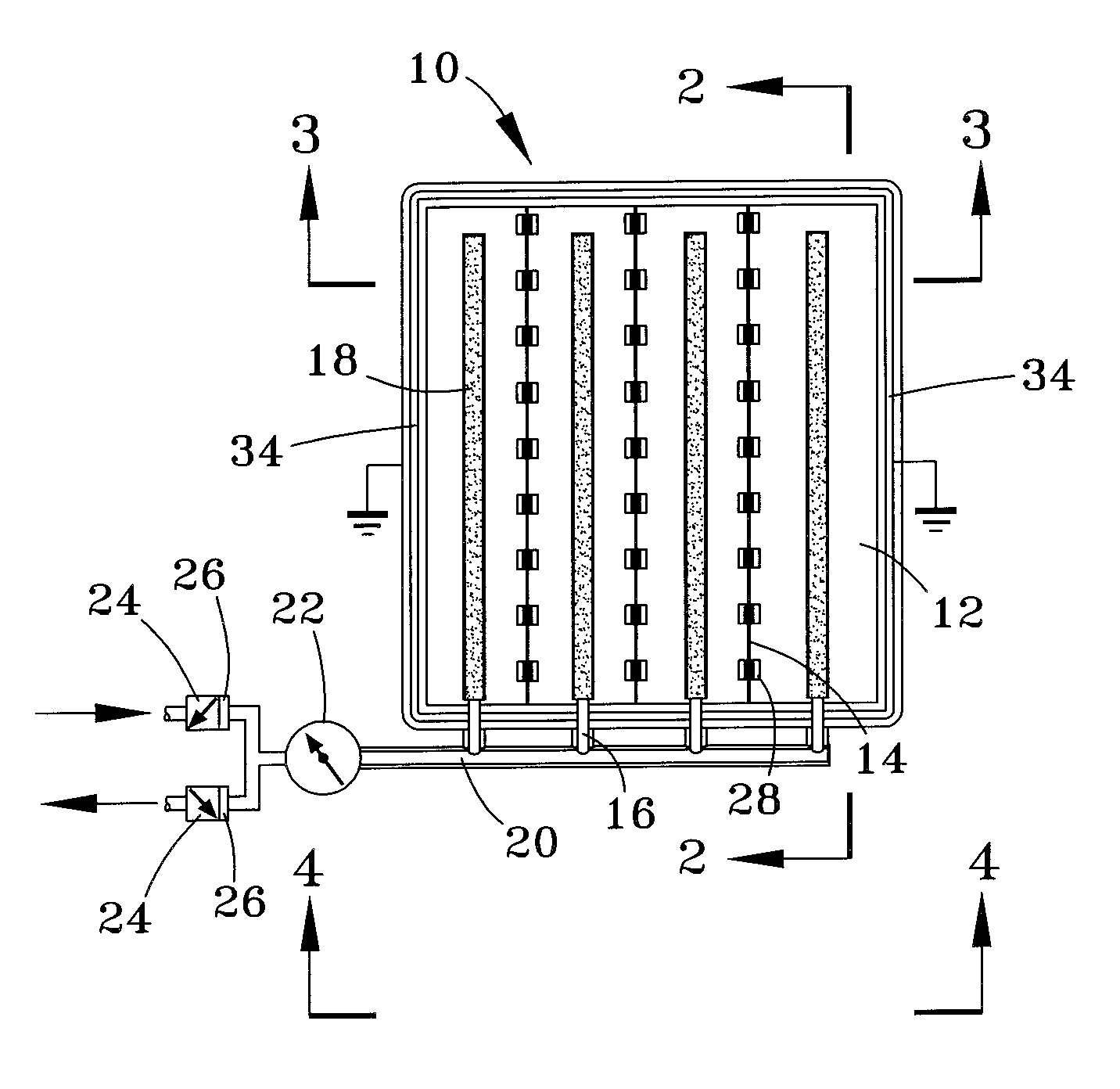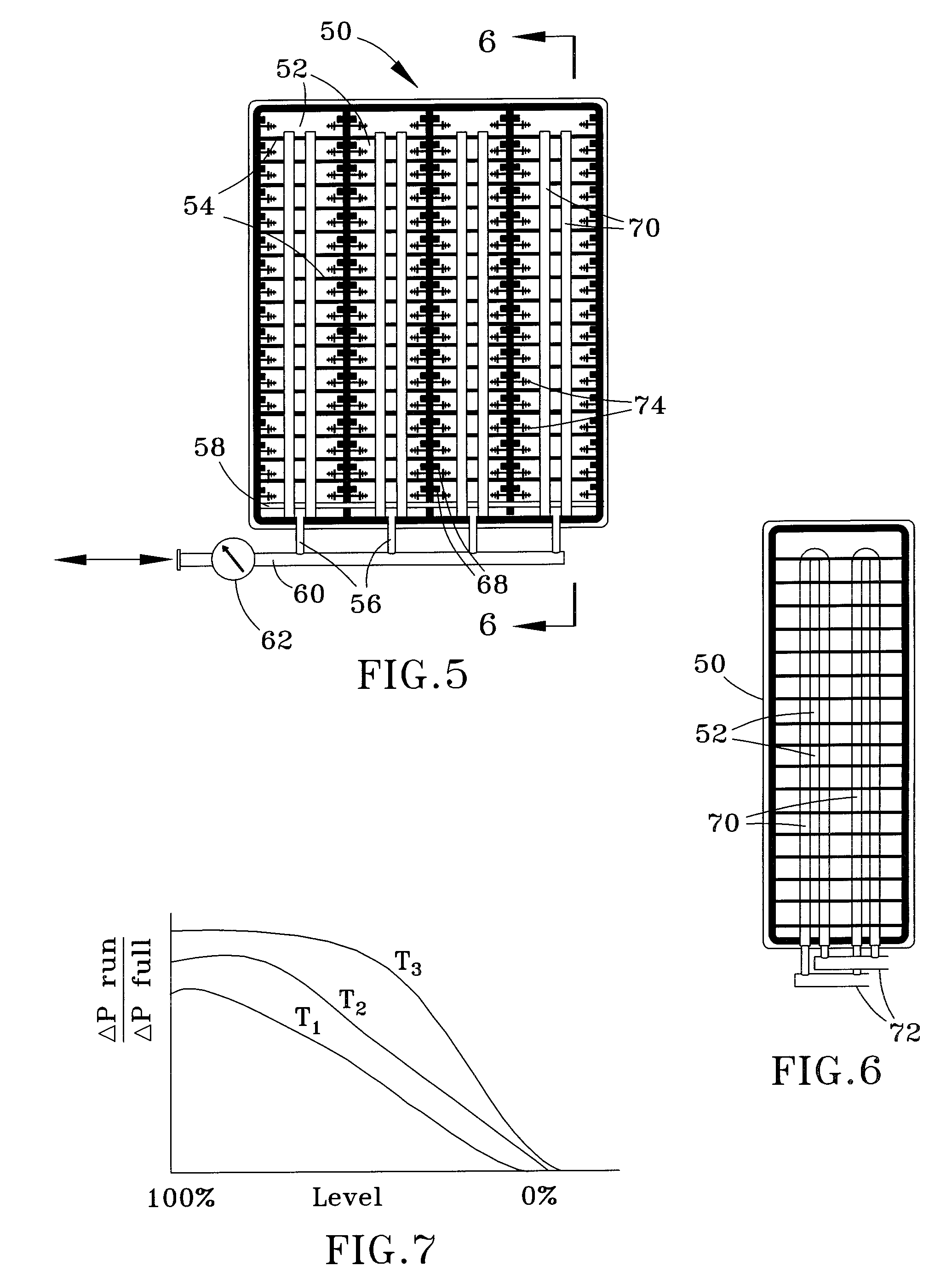Hydrogen storage tank and method of using
a technology of hydrogen storage tank and storage tank, which is applied in the direction of liquid handling, instruments, packaged goods types, etc., can solve the problems of low heat value per volume, lack of convenience of gasoline, and difficulty in hydrogen storag
- Summary
- Abstract
- Description
- Claims
- Application Information
AI Technical Summary
Problems solved by technology
Method used
Image
Examples
Embodiment Construction
[0023]The present invention provides hydrogen storage systems with particular application for automotive fuel cells. The storage systems include integrated storage tanks adapted to contain solid-state storage media, including but not limited to nano-porous silicon (npSi) powders. The tanks are equipped with heat distribution systems, light sources, and electric field generators to facilitate hydrogen charge and discharge processes and fill level checks carried out with the tanks. An algorithm is preferably employed to determine the fill level of hydrogen in the tanks.
[0024]FIGS. 1 through 4 depict a first configuration of such a hydrogen storage tank 10. The tank 10 is divided into several compartments 12 by dividers 14 shown as extending the full height of the tank 10 so that the compartments 12 are substantially parallel to each other. Each compartment 12 is adapted to contain a solid-state storage media such as a npSi powder. The tank 10 is equipped with hydrogen inlet / outlet por...
PUM
| Property | Measurement | Unit |
|---|---|---|
| Temperature | aaaaa | aaaaa |
| Pressure | aaaaa | aaaaa |
| Wavelength | aaaaa | aaaaa |
Abstract
Description
Claims
Application Information
 Login to View More
Login to View More - R&D
- Intellectual Property
- Life Sciences
- Materials
- Tech Scout
- Unparalleled Data Quality
- Higher Quality Content
- 60% Fewer Hallucinations
Browse by: Latest US Patents, China's latest patents, Technical Efficacy Thesaurus, Application Domain, Technology Topic, Popular Technical Reports.
© 2025 PatSnap. All rights reserved.Legal|Privacy policy|Modern Slavery Act Transparency Statement|Sitemap|About US| Contact US: help@patsnap.com



